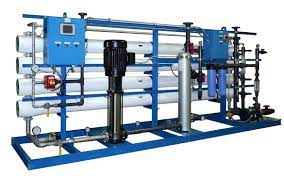The Best RO Water Purifiers By Water Logic In Pakistan At Cheap Prices

Choosing the right RO water purifier for your home
No matter how clean drinking water may seem, it is not necessarily clean and bacteria-free. It may contain small amounts of microbes, next-generation contaminants such as lead and arsenic or very high TDS (total dissolved solids) levels.
In eight major Pakistan cities, water-borne diseases such as cholera, jaundice and typhoid account for 77% of all diseases in Pakistan. The survey also indicated that in many parts of Pakistan, TDS levels are well above the permissible level.
One would think that it is enough to boil the water before drinking it. However, this is far from the truth. Boiling only protects against microbial contamination caused by bacteria, viruses, etc., but does not remove new hazardous chemicals/contaminants such as lead, pesticides and natural contaminants such as mud, dust, rust, etc.
So what can you do to ensure that the quality of the drinking water your family receives is clean and safe?
Many households use RO water purifiers to ensure safe and healthy drinking water. But at a time when the market is flooded with so many brands, how do you decide which water purifier to choose?
You need to do a little research before buying a water purifier. First, you need to find out the condition of the water. Once you know this, you will know what type of water purifier you should buy. Here is information about the different technologies available in the market.
Reverse osmosis
If you live in an area with hard water, water purifiers with RO are ideal. If the TDS (total dissolved salts) content of the water exceeds the permissible limit, it poses a serious threat to your health. Water purifiers with RO reduce the TDS content of the water to an acceptable level and should only be used if the total dissolved salts in the water are too high.
RO (reverse osmosis) works by applying high pressure to the water depending on the salt content and passing the water through a semi-permeable membrane 0.0001 micron in size. RO allows for cross-filtration of the water where contaminants are captured by the membrane. Impure water flows in one direction and clean water in the other. Cross-filtration allows dirty water to carry contaminants with it and prevents them from accumulating.
Typical RO purifiers remove more than 90% of TDS and all impurities in the water. These impurities can be bacteria, viruses, protozoa, cysts, coliform bacteria, natural and chemical contaminants, etc.
UV
UV water purifiers are ideal in places where soft water is used, such as from rivers or lakes, and where the TDS level is below 500 mg.
UV purifiers use a lamp to generate the UV radiation to which the water is exposed. The UV rays penetrate the microorganism and alter its DNA, after which the microorganism is essentially killed and can no longer cause infection or reproduce! This method kills approximately 99.99% of all pathogenic organisms!
These purifiers do not change the chemical composition of the water or its taste. Because they do not change the chemical composition of the water, they cannot be used in areas with hard water.
Adsorption of carbon
When water flows over a carbon surface, contaminants are attracted to that surface. The carbon is treated so that it is extremely porous, providing a large surface area for adsorption or chemical reactions. Granular coal or pulverized coal blocks are commonly used in such carbon filters.
This is a commonly used technology that is very effective in removing pesticides, herbicides, chlorine, radon and other chemicals. The quality of these filters is judged by the size of the particles they are able to remove. A 0.5 micron filter is more effective than a 10 micron filter.
Ultrafiltration (UF)
This cleaning method removes dissolved solids as small as 0.005-0.1 microns. It is often used as a pretreatment step prior to reverse osmosis (RO). The ultrafiltration membrane acts like a molecular sieve and separates particles based on their size.
The water passes through a very fine filter that traps most macromolecules larger than a certain size, such as colloids, microorganisms, etc. Smaller particles, such as solvents, pass through the filter. They work best in areas where TDS levels are less than 500 mg/L.
Ionization
This purification method is ideal if you live in an area with hard water. To turn hard water into soft water, it is passed through an ion exchange resin. The water flows over its surface and dissolves the sodium. Calcium, magnesium and other calcium elements precipitate on the surface.
Ion exchange can reduce the hardness of water. It can also remove contaminants such as iron, lead, copper, barium, radium and nitrates. This technology is commonly used in water purifiers, as are other methods.
When buying a water purifier, make sure that it is certified by an accredited body such as NSF, WQA and FDA.
With all this information, you can safely choose a water purifier that suits your needs. Make sure your family is drinking clean and safe water right now.




